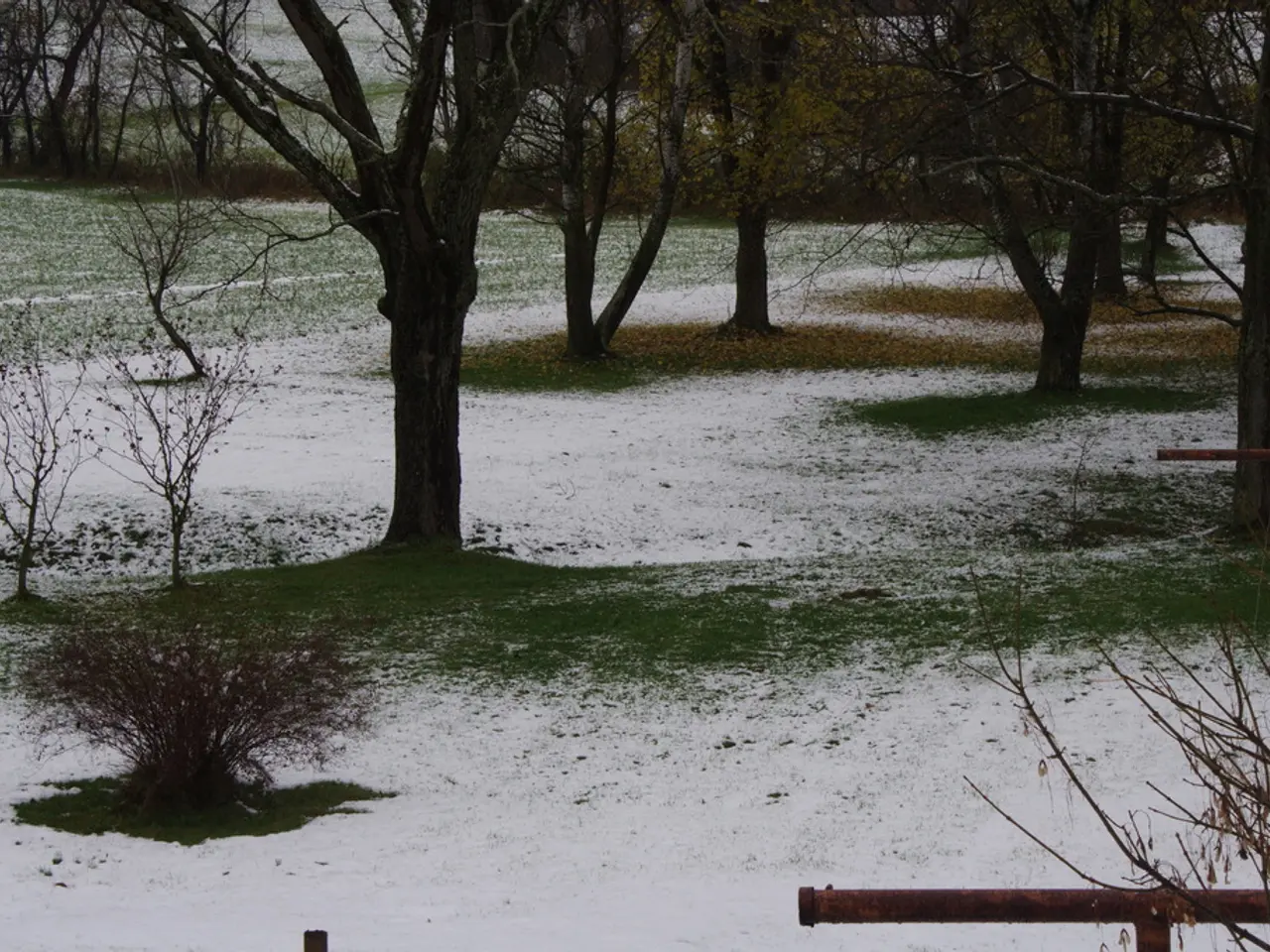Thriving in Moist Environments: What Plants Prefer Overly Wet Soil?
Soggy Soil Gardening: A Guide to Wet-Loving Plants
Gardening in soggy soil can be a challenge, but with the right plants, you can create a thriving and vibrant garden. Here are some plants that enjoy moist conditions and can help transform your wet garden into a beautiful oasis.
Perennials
Perennials such as Cardinal Flower (Lobelia cardinalis), Ligularia, Astilbe, Turtlehead, Canada Anemone, and Marsh Milkweed thrive in consistently moist to wet soil. The Cardinal Flower produces bright red, white, or rose-coloured flowers, making it highly attractive to butterflies and hummingbirds. Creeping Jenny (Lysimachia nummularia) adds a pop of colour with its bright chartreuse foliage and small yellow flowers in early summer.
Shrubs
Shrubs like Dogwood, Hydrangeas, Willow (e.g., compact Salix purpurea 'nana'), and Virginia Sweetspire (Itea virginica) perform well in wet soil. Dogwoods offer four seasons of interest, while Virginia Sweetspire enjoys the same cultural requirements as summersweet and will do fine in a regular garden setting as long as the soil is relatively moist. Buttonbush (Cephalanthus occidentalis) can withstand prolonged deep flooding, making it a useful addition to gardens.
Grasses
Grasses such as Switchgrass, Sweetgrass, and moisture-loving sedges stabilize soils and are adapted to soggy environments. Ornamental grasses that can tolerate soggy soil include Feather Reed Grass (Calamagrostis), Red Switchgrass (Panicum virgatum), Miscanthus, Blue Oat Grass (Helictotrichon), Blue Fescue (Festuca), Japanese Forest Grass (Hakonechloa macra), big bluestem grass, corkscrew rush (Juncus effusus), horsetail reed grass (Equisetum hyemale), and sea oats (Chasmanthium latifolium).
Annuals and Other Moisture-Tolerant Plants
Annuals and other moisture-tolerant plants include Impatiens, Coleus, Castor Bean, Mallow, and Forget-Me-Nots (biennials that thrive in damp soil among temperate woodlands).
When planting in wet soil, it's essential to avoid soil compaction by planting during drier spells and positioning the root ball slightly above the soil surface to prevent root rot. Mulching also assists in moisture regulation and weed suppression.
Examples of Wet-Loving Plants
- Japanese Iris (Iris ensata) produces tall, elegant blooms in shades of blue, pink, white, lavender, or violet and prefers shallow water but can survive on higher ground if the soil stays moist.
- Joe Pye Weed (Eupatorium purpureum) thrives in full sun to part shade and moist to wet soil, producing masses of mauve flower heads in late summer and fall.
- Winterberry (Ilex verticillata) thrives in boggy conditions, poorly drained soils, and wet woods, producing bright red berry clusters in early autumn.
- Pickerel Weed (Pontederia cordata) grows best in full sun with wet soil and shallow standing water, producing pretty spikes of pale blue flowers.
- Papyrus (Cyperus papyrus) grows up to 5 feet tall and prefers full sun with very moist soil or shallow standing water.
- Turtlehead is an adaptable perennial that can thrive in soggy soil and tolerate drought, growing up to 3 feet tall in full sun to part shade with consistently moist soil.
- Winterberry (Ilex verticillata) thrives in boggy conditions, poorly drained soils, and wet woods, producing bright red berry clusters in early autumn. It grows up to 8-10 feet tall.
- Summersweet (Clethra alnifolia) grows naturally out of swamps and can reach heights of six to eight feet. It produces masses of white flower spikes from July into August.
- Horsetail (Equisetum hyemale) has stiff, upright, bamboo-like, dark green, segmented stems and proliferates by underground runners in moist soil or shallow water.
- Swamp Azalea (Rhododendron viscosum) reaches 10 feet tall but grows slowly, producing showy white blossoms in late June and early July. It requires consistent moisture and is perfect for swampy or flooded areas.
By selecting native or adapted species known for wet soil tolerance, you can create a thriving garden in soggy soil conditions.
Soil health in soggy soil gardens can be improved by incorporating a variety of plants that enjoy moist conditions, such as Ligularia, Turtlehead, and Japanese Iris. Adjusting your lifestyle, such as planting during drier spells and using mulch for moisture regulation, can help ensure these plants thrive. In addition, fashion and beauty elements, like the bright red flowers of the Cardinal Flower, can be integrated into your home-and-garden design, creating a picturesque food-and-drink setting for friends and family.




